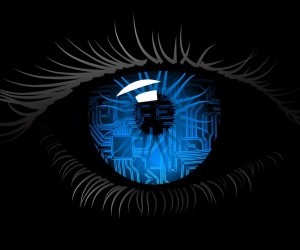Iris-based biometric technology provides a fast, easy-to-use and safe identity authentication system. It’s also widely recognized as the most accurate of the biometric technologies.
It takes only few seconds or so to enroll in an iris database. It begins with a person standing about 15 to 50 inches (35cm to 1 meter) in front of a camera which takes a picture of both eyes (irises). There are no lasers, bright lights or contact involved. Iris-based technology should not be confused with retinal scans.
Integrated software uses the photo of the irises to create a template with more than 240 points of indentation. The resulting 512-byte, encrypted template is stored in a computer database. The templates’ small size makes it easy for iris technology to handle very large enrollment populations. Also, the digital templates can’t be reversed to produce any type of visual image.
Iris-based systems are easy for people to learn and use. In a typical security solution, a person stands about 15 inches from a reader for authentication. A mirror-assisted, audio-prompted interface positions the reader to accommodate users of different heights. Once the iris is matched, integration with an access control system opens a door, turnstile or other physical or software barrier. Iris readers also work outdoors when protected from direct sunlight and extreme temperatures. The entire authentication process takes less than two seconds.
And since the iris doesn’t change throughout a person’s life, there is no need to re-enroll subjects. Also, children can be entered into a system as the iris is fully formed at birth.

